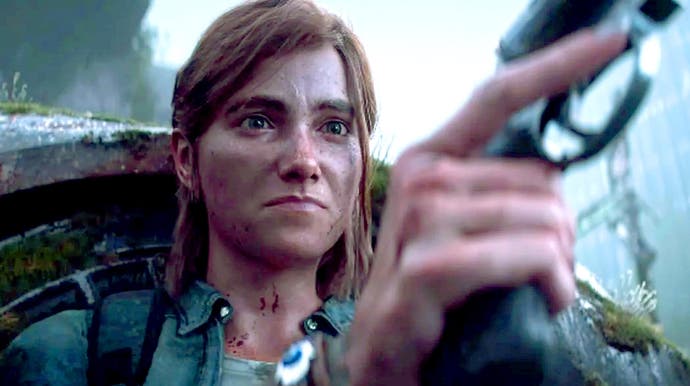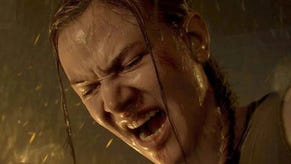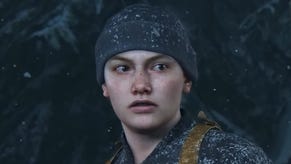The Last of Us Part 2 tech review: a Naughty Dog masterclass
Raising the bar.
Across the generations, the first-party exclusive 'prestige game' has become an important part of the console ownership experience. These large, expensive projects are designed to push the medium to its limits, offering players new experiences with top-tier production values and state-of-the-art technology. Within the upper echelon of studios charged to deliver these halo titles, Naughty Dog has cemented itself as one of the best. The Last of Us Part 2 is the studio's latest creation and perhaps its most stunning. Beneath its decaying façade lies a gorgeous, beautifully realised experience; it's a game that applies the multitude of hard lessons learned from prior releases, culminating in delivering Naughty Dog's largest, most ambitious project to date - but what does that really mean in the context of this game?
Well, when I describe the game as the culmination of the studio's efforts to date, that's exactly what I mean. From a technical perspective, it's difficult to isolate brand new techniques or technologies we've never seen before. What you are getting is exemplary execution, right down to the tiniest detail, plus a more thorough exploration of earlier concepts the developers has experimented with in the past. For example, something we couldn't show in pre-launch embargoed materials is one of the most important concepts that underpins this new game. The Last of Us Part 2 features the largest environments in a Naughty Dog game to date, taking a page from the more open-ended design of Uncharted: The Lost Legacy, but taking the idea to the next level. Character and world rendering have been improved across the board while significant changes have been made to the underlying mechanics enabling a smoother, more enjoyable experience all around.
The original The Last of Us, like Uncharted before it, is a highly cinematic game driven by set-piece moments - it was designed to appear open but it was still ultimately a series of 'tunnels'. In part, this is also true of the sequel, but the main difference lies in the city itself. Seattle serves as a sort of central pillar around which the game's more cinematic moments are constructed. Basically, it's almost akin to a hub, just not in the typical open world sense. At various points throughout the game, your objective involves finding a specific location, but you're never explicitly told how to get there, nor are you funneled down a specific path.
This is where the game differs from the original - you now have the option to take different streets, explore different buildings and generally experience more of the world at you own pace. There are a lot of places you aren't required to visit on your journey to the objective, but you will uncover useful supplies and encounters that you could have easily missed. Meanwhile, simple objectives turn into hour-long quests simply by virtue of how open the world is. It's this aspect that helps the world feel more like an actual place rather than a 'tunnel' and it also brings us to our first visual focus - the world itself.
From the smallest details to the largest structures, The Last of Us Part 2 is remarkably dense. Indoors, the game leans on Naughty Dog's exceptional approach to pre-calculated indirect lighting. The game seems to utilise a probe system combined with light maps and realistic physically-based materials off which the light plays very naturally. The result are most keenly felt in dimly lit interiors that feel remarkably realistic. It's not perfect, as interactive objects don't always blend with the baked lighting, but it works overall - most objects sit realistically in the scene with natural ambient shadowing. This is coupled with a supremely high level of detail with a large selection of prop objects crafted and placed around each room, all of the intricately detailed.
Attention to detail in the rendering is rich and abundant throughout. The fidelity and additional freedom basically work together to make basic exploration more satisfying in this game, heightening the sense of discovery, with each room having its own story to tell. Outside, things are even more impressive. The Last of Us Part 2 does an impressive job in delivering scale to open worlds standards, while delivering hand-crafted micro-detail. Systems-level animation adds a lot to world quality: the billowing grass reacts as the player moves through the environment and the way light plays off building surfaces delivers a remarkable look overall.
The key to creating a convincing world lies in the more subtle interactions: water that reflects, wind that blows, shadows that are cast, glass that breaks - and more. Nailing these details is a key part of building this believable world and The Last of Us Part 2 fares well. Grounding your character requires a careful approach to shadows and reflections. To solve this, Naughty Dog once again appears to employ capsule shadows along with capsule reflections. Basically, using a rough approximation of the character shape, the artists show very soft, natural shadows that interact beautifully with the predominantly indirect lighting. These are also deployed for reflections too - player reflections often missing in many triple-A titles. The game even has its fair share of what look like render-to-texture mirrors, which look exceptionally convincing.
For larger surfaces such as water or wet pavement, Naughty Dog uses a mix of box-projected cube maps and screen-space reflections. There's nothing especially unique about this, but it's the craftsmanship on display that matters. If you pay close attention, you'll notice that the cube maps are very carefully aligned with the scenery allowing the SSR to almost perfectly line-up. This helps avoid the typical SSR artefacts, where on-screen detail isn't available for reflections, creating discontinuities in motion. Water in general looks wonderful: small streams and water run-off look great and the same is true of the stormy seas along the coast. The Last of Us Part 2 also makes significant use of rain, nearly half of the game's lengthy run-time features precipitation. The droplets themselves work in tandem with surface effects and lighting to deliver a very atmospheric result. Then we have volumetric lighting which plays a role in establishing atmosphere throughout the game using a technique comparable to Uncharted 4's delivery.
All of this is coupled with a robust post-process pipeline, enabling the full range of cinematic effects including per-pixel motion blur, film grain and bokeh depth of field. Per-object motion blur has been a staple of Naughty Dog games since Uncharted 2 and the implementation here is perhaps the best yet. The visual artefacts present in Uncharted 4 look to be cleaned up and as it's combined with film grain, this allows for cleaner motion all around (as always, however, motion blur intensity can be adjusted in the menu system). Bokeh depth of field primarily shows up in cinematics but is also used while aiming or executing a stealth kill. Again, it looks excellent.
Interaction with objects and materials is also very impressive. The Last of Us Part 2's new rope physics are highly realistic, for example. At various points, you'll need to pick-up and throw a rope or extension cable and it has its own physics system. Not only that, as you move towards or away from the point of origin, Ellie will either wrap or unwind the cable in real-time - a nice touch. Glass is featured heavily throughout and I'm quite fond of the animation work of breaking glass: you really get the impression of your character slamming an object against the glass surface to cause breakage rather than just swinging and clipping through it with no sense of impact. Another important detail is the blood system, which dials up the feeling of consequence, unease and flat-out horror you get from combat. After you take out an enemy with a particularly nasty attack, you might notice blood slowly pooling around the victim, something that even occurs if the enemy is killed in water.
One of the game's biggest triumphs is in its character rendering. Again, it comes across as a culmination of the techniques Naughty Dog has been working on across the generation, but the end result is simply exceptional. It starts with the cinematic sequences which are predominately rendered in real-time, like Uncharted 4 before it. As expected, the level of detail here is almost absurd, right down to the uncanny sub-surface scattering of light through skin, the level of detail right down to the fingertips and crucially, the quality of eye rendering. This is backed up by the same level in attention to detail not just in cloth rendering, but in its animation too. All told, the quality of the models, animation and acting here is perhaps the best I've seen to date. After a while, it feels as if you're watching real people rather than 3D models. The seamlessness of it is also worth mentioning - again, it's nothing new, but the transition from cutscene to gameplay is just so effective.
Animation quality is also on another level. Naughty Dog is well known for its expert use of animation blending but for this game, the team uses the concept of motion matching - a technique designed to ease the combination of character movement with animation data. It works by capturing lots of animation data and then building a system to interpret that data in a responsive, realistic way. What this means is that all the basic animations including running, walking, turning, ducking and more all exhibit physically correct motion without compromising responsiveness. So yes, The Last of Us Part 2 is a more responsive game than Naughty Dog's previous works. Moving through the world feels slightly snappier all around, but it's the fluid transitions between actions that sticks out the most.
Combat also feels better as a result. The melee battles are a tremendous upgrade - each hit causes the enemy to flinch and bend, and it's so much more visceral this time. This is enhanced by what I feel is dramatically improved artificial intelligence - something the original game really struggled with. This time around, the reactions and behaviour of both enemies and your companion feel more natural. It's rare that your companion will run out into the middle of a field when you're supposed to be in stealth, for instance, and enemies search for players in a more believable fashion. I also appreciate how larger battles play out with enemies moving around the field, with companions actually getting some decent, worthwhile shots in. The enemy can even circle around in an attempt to get the drop on you - it just feels more dynamic as a whole.
These are the aspects of the game that stand out to me most, but in truth, I expect everyone who plays it will have their own takeaways. The point is, after playing this game through from start to finish, I walked away impressed. We've seen a lot of top tier AAA releases this generation and it's clear that a lot of other developers are delivering impressive results as well, but there's just something about these Naughty Dog productions that stands out. This level of polish within the context of such a large game is difficult to beat.
The Last of Us Part 2's mix of hyper-detailed environments with natural lighting and materials alongside expressive, beautifully animated characters never ceases to impress. It's just as high quality a production as you would have expected from the beginning. It also features an exceptional soundscape with full 7.1 audio support and a huge dynamic range if you select the option. It's especially immersive in areas where it's rainy - the sound of droplets playing off objects around you adds a lot.
If I had to level any complaints at the game, it would be that perhaps the final game doesn't quite match up to the full promise of the incredible E3 2018 demo embedded above. Don't get me wrong, it's close, but the animation work and shading doesn't quite live up to the full promise of that remarkable vertical slice. However, when you stand back and look at the achievement on the whole, this is an excellent sequel that greatly improves upon the core gameplay and level design of the original game. The story may not work for everyone - though I did enjoy it - but there's no question that this is a superior gameplay experience, integrated within one of the most impressive technological achievements of the generation.












